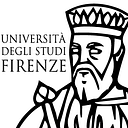From Vernacular to World Heritage
From Firenze University Press Book
Edited by:
Letizia Dipasquale, University of Florence
Saverio Mecca, University of Florence
Mariana Correia, ESG, School Gallaecia, Portugal
The ‘universal value’ of vernacular architectural heritage in the prestigious UNESCO World Heritage List, although more or less recognised and considered in the holistic dimension of their integration into exceptional cultural contexts, which are themselves listed, is still very limited as shown by the 11211 properties inscribed on this list to date, in 2020. The tangible and intangible values of vernacular heritage, and the exemplary nature they bear, with regard to the eco-responsibility of builders, for example their setting in situation, their anchorage to the ‘place’ (Norberg Schulz, 1981) constitute a valuable heritage that cannot be neglected, particularly in view of the now undisputed evidence of their relationship to the resources available in the diversity of their environments. It concerns human resources:
constructive cultures educated by the collective memory of knowledge and skills, the arts and crafts of construction and architecture, both popular or scholarly.
Moreover, it also refers to physical resources:
organic and geo-sourced materials, wood, straw and other plant fibres, earth and stone. But also, for their intelligent response to the constraints and potential of the sites, to the benefits and hazards of the climate, to natural risks (floods, fires, earthquakes). And yet these evidences are still too little acquired, although a broader adhesion of the societal thought converges to it.
The vulnerability of vernacular habitat heritage, which has been exposed to massive destruction since the Industrial Revolution at the end of the 19th century, and then with the recent period of economic growth during the thirty ‘glorious decades’ (end of the 1940s to the beginning of the 1970), is guilty societal blindness. Either this vulnerability is borne by commercial, economic and financial interests, leaving all room for the expansion of the contemporary city, ordering the destruction of historic islets (e.g. the Lilongs of Shanghai in China); or either it was induced by economic or climatic crises (e.g. several villages of Tierra de Campos in Spain, or elsewhere); or by an ideological nature (e.g. rural housing in Romania under Nicolae Ceausescu); or even in a conflict situation (the ancient historic cities of Syria (Damascus, Bosra, Aleppo) and the domed rural housing of the Aleppo region, and in a post-conflict situation, where the tabula rasa policy is enforced. Faced with such situations, despite the international conventions of UNESCO (1954, 1970, 1972, 2003) constituting safeguards, and the recommendations
and charters of the ICOMOS International Scientific Committees, it is still very often difficult to intercede and to act for the protection of vernacular heritage, mainly habitat, since the populations are driven out or forced to abandon vernacular heritage and their habitat, in spite of themselves, thus exposing them to a slow destruction, for lack of maintenance and to the actions of their climatic environments, or to looting.
All the more so, as the value of this heritage is insufficiently recognised or wrongly considered as secondary, or only partially meeting the criteria and codes governing the possibility of a classification. As a result, there are too few vernacular architecture cultures that are listed as World Heritage,
or which can even only claim it. The prospect of a multiplied destruction of this heritage is therefore irreparably programmed, and would constitute an immeasurable and irreplaceable loss of culture and history for humanity. An unacceptable denial.
The current times are exposed to many uncertainties and threats widely discussed elsewhere. The broken pact with nature, this “natural contract” referred to by the philosopher Michel Serres (1991), established
from generation to generation of popular builders, must be absolutely and urgently restored.
To defend this perspective would simply be to protect the heritage of the ‘meaning’ of life, of its fundamental intrinsic values, which themselves inhabit the vernacular heritage. It would also be recovering from our duty to act for a “reconciled” relationship, more peaceful, with otherness, with humans and nature.
Act for a society of the rediscovered ‘link’. Thus, paying increased attention to the classification of vernacular housing heritage is an act of resistance, of a sense of measure (against the excess and accumulation of our current societies). It is to stop the destructive madness of nature, and to help found this indispensable culture and ethics of eco-responsibility, more collectively shared, to bring about a society of chosen sobriety and frugality. To preserve this essence, this ineffable meaning to which the vernacular housing testifies, must absolutely be passed on to future generations. A society that would bring humanity to its necessary re-rooting in habitable territories, “a strategic key to sustainable development” (Magnaghi, 2003).
This book is an urgent invitation to move towards other possibilities than those sadly announced by taking a concrete lesson in the values of vernacular architectural heritage, of the ‘obligation’ to protect and classify them. A lesson providing answers without imitation, without folklorism, without museification, but in mimesis (Alexander, 1977) subversive, imaginative and creative, resolutely contemporary.
It is time to follow the path of the “great vernacular building site” (Frey, 2010), in construction, as well as in protection and conservation, by intelligently using the tools of “thinking and doing” that this book proposes at the right height of the major cultural issue that must be addressed.
DOI: 10.36253/978–88–5518–293–5
Read Full Text: https://fupress.com/catalogo/from-vernacular-to-world-heritage/4872
